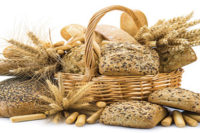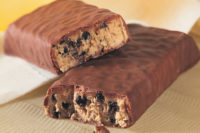Omega 3 fatty acids and antioxidants have become household words. The body doesn’t make Omega 3s, so we must get them in our food supply. Fortunately, thousands of antioxidants are found in grains, fruits, vegetables, nuts and legumes.
How do antioxidants help us? Oxidation causes apples to turn brown and meat left too long in the refrigerator to smell. It also causes free radicals in our body. “Free radicals” are damaged cells missing a critical molecule. They are aggressive in taking molecules from other cells and damaging—not killing—them, which sets off a chain reaction that can cause inflammation and then disease. Antioxidants can prevent some of the free radicals from forming in the first place and assist others to stop the chain reaction.
Beta-carotenes, zinc, selenium, lutein, zeaxanthin, Omega 3s and vitamins A, C and E are a few of the naturally occurring antioxidants found in common foods. Whole grains contain several antioxidants: Flavonoids; inositols; lignin; phenols; phytates; phytoestrogens; selenium; tocopherols (vitamin E); and zinc.
There are two major types of Omega 3s:
• Marine sources (from algae and oily fish)—eicosapentaenoic acid (EPA) and docosahexaenoic acid (DHA).
• The main plant source is alpha linolenic acid (ALA), a precursor to EPA and DHA. Stearidonic acid (SDA), a more efficient precursor, is becoming more cultivated.
Baked goods most likely contain plant-based sources of Omega 3s, such as flaxseed, olive, canola and soybean oil and walnuts, but there are some marine-based sources available. To make a “good source” claim, a product must contain 160 mg. of Omega 3s per serving or twice that amount for an “excellent source” claim. There is a qualified health claim for DHA and EPA.
What good are Omega 3s?
The benefits of Omega 3s are well documented. They may reduce the risk of heart disease, lower blood pressure, lower triglycerides, reduce joint pain and stiffness in rheumatoid arthritis, reduce inflammation in periodontal disease and irritable bowel syndrome and have promise in numerous other areas. Research has shown promising, but not conclusive, evidence for decreasing the risk of age-related macular degeneration (AMD); improving athletic performance; lowering anxiety and improving mood; reducing the risk of atherosclerosis, osteoporosis and breast, colon and prostate cancer; increasing cognition; and the list goes on. In five years, we will have more knowledge of the benefits of Omega 3s.
Can we consume too many Omega 3s? As with all nutrients, there are some caveats. Food sources are preferable to supplements for that very reason. But many American don’t like fish, so the only way they will get DHA and EPA is probably through supplements. Also, some fish species contain high levels of methylmercury or polychlorinated biphenyl (PCB), and because fish oil rarely does, supplements may be the answer for pregnant and nursing women and young children.
EPA and DHA can increase bleeding, so those taking medications that could increase bleeding shouldn’t take supplements.
Since each antioxidant protects a different part of the body, it’s important to consume a wide array of foods.
So keep your customers healthy and happy as they go into the holidays by adding good sources of Omega 3s and antioxidants to your baked goods and snacks.
For in-depth information go to:
http://www.webmd.com/healthy-aging/omega-3-fatty-acids-fact-sheet?bookmark=true&login=true
http://www.mayoclinic.com/health/fish-oil/NS_patient-fishoil
https://www.mainenewsonline.com/how-antioxidants-work/
http://www.ncbi.nlm.nih.gov/pubmed/
23818772 (Nutrients for the Aging Eye)
Judi Adams, MS, RDN, president of The Wheat Foods Council, has more than 30 years of nutrition education experience. She owned her own nutrition and marketing company, is past-president of the Grain Foods Foundation and held an assistant professor post at North Dakota State University as well as those at the ND Wheat Commission and National Sunflower Association. Watch for Adams’ articles occasionally appearing in the pages of SF&WB.




